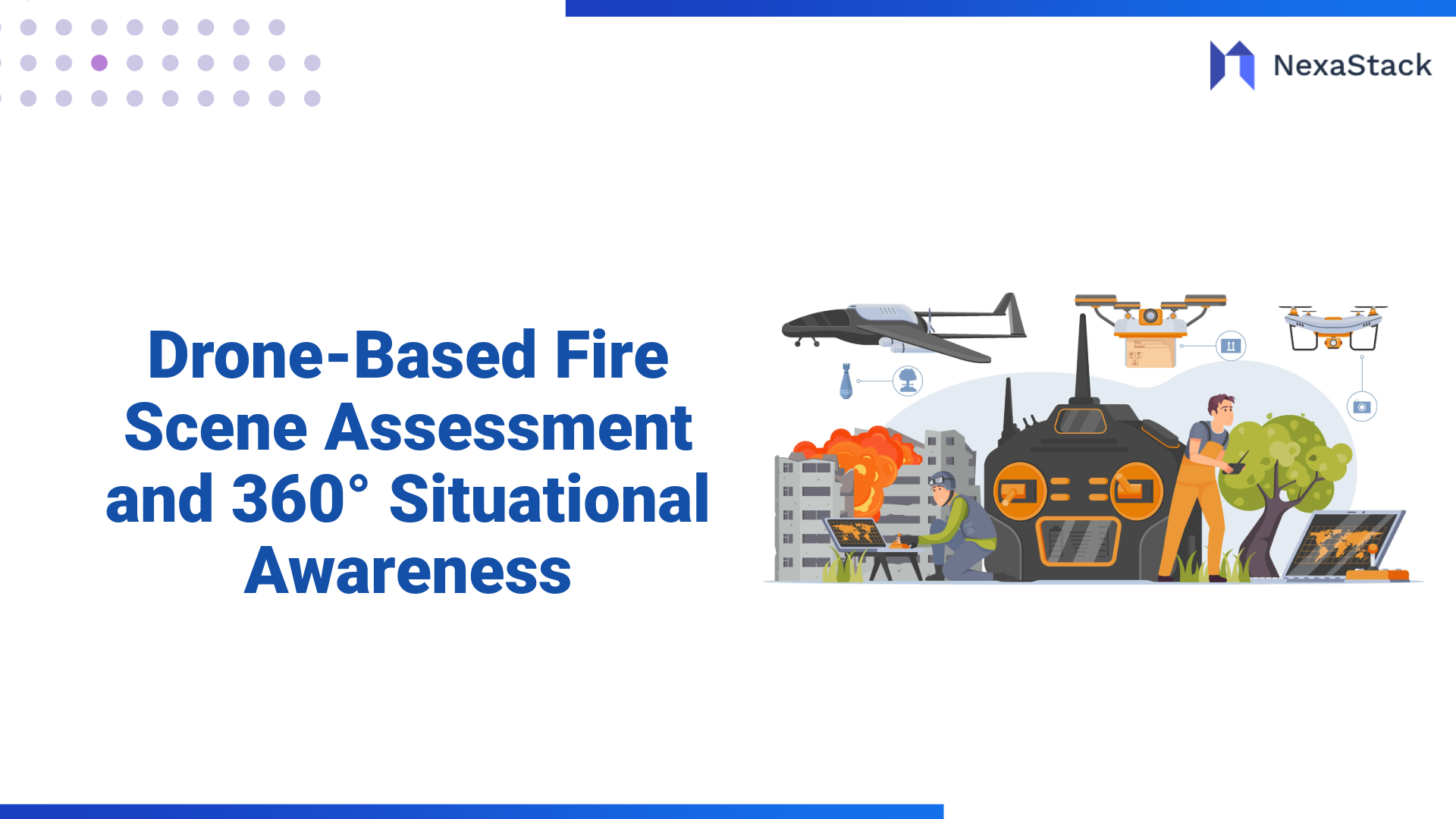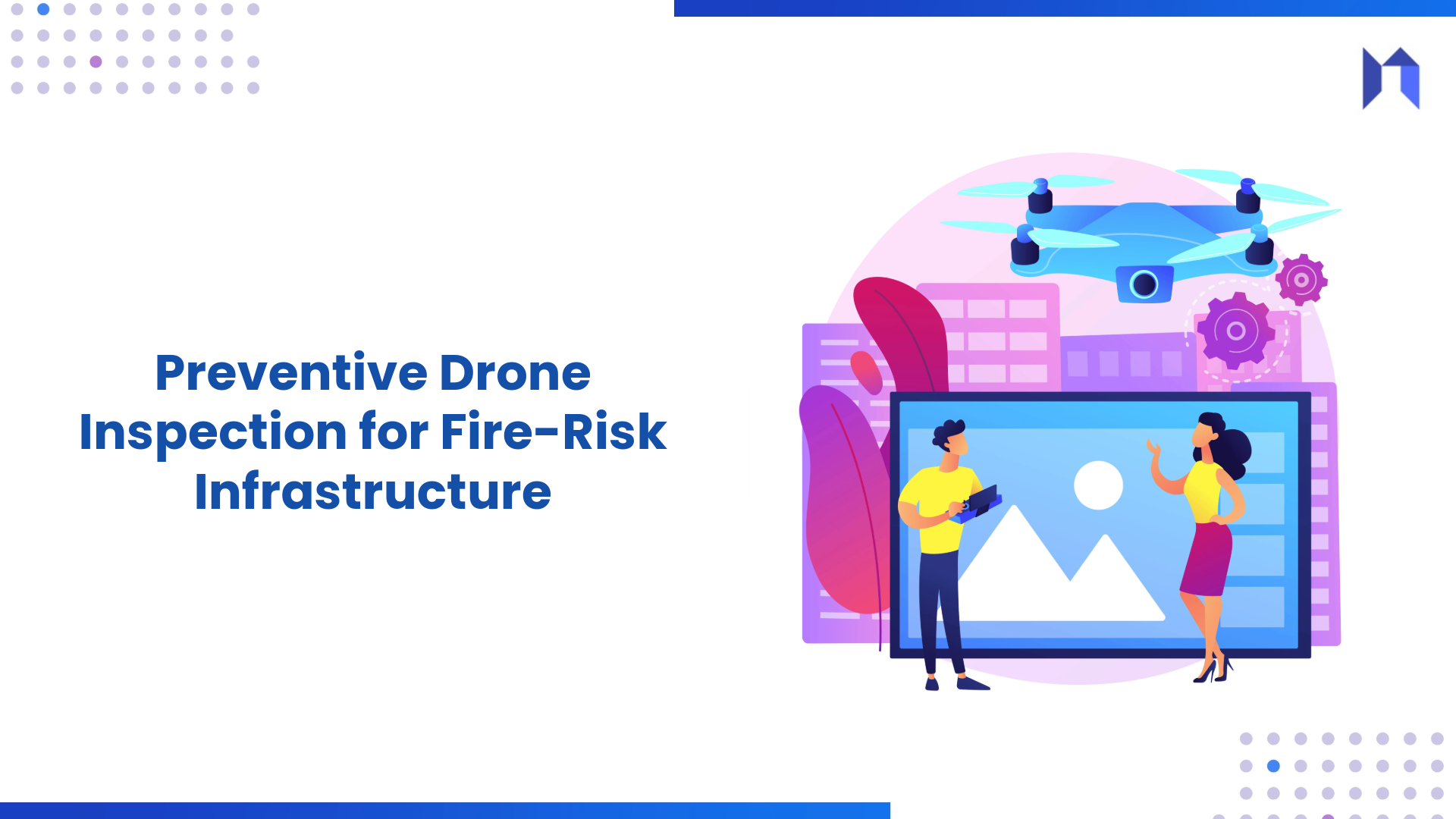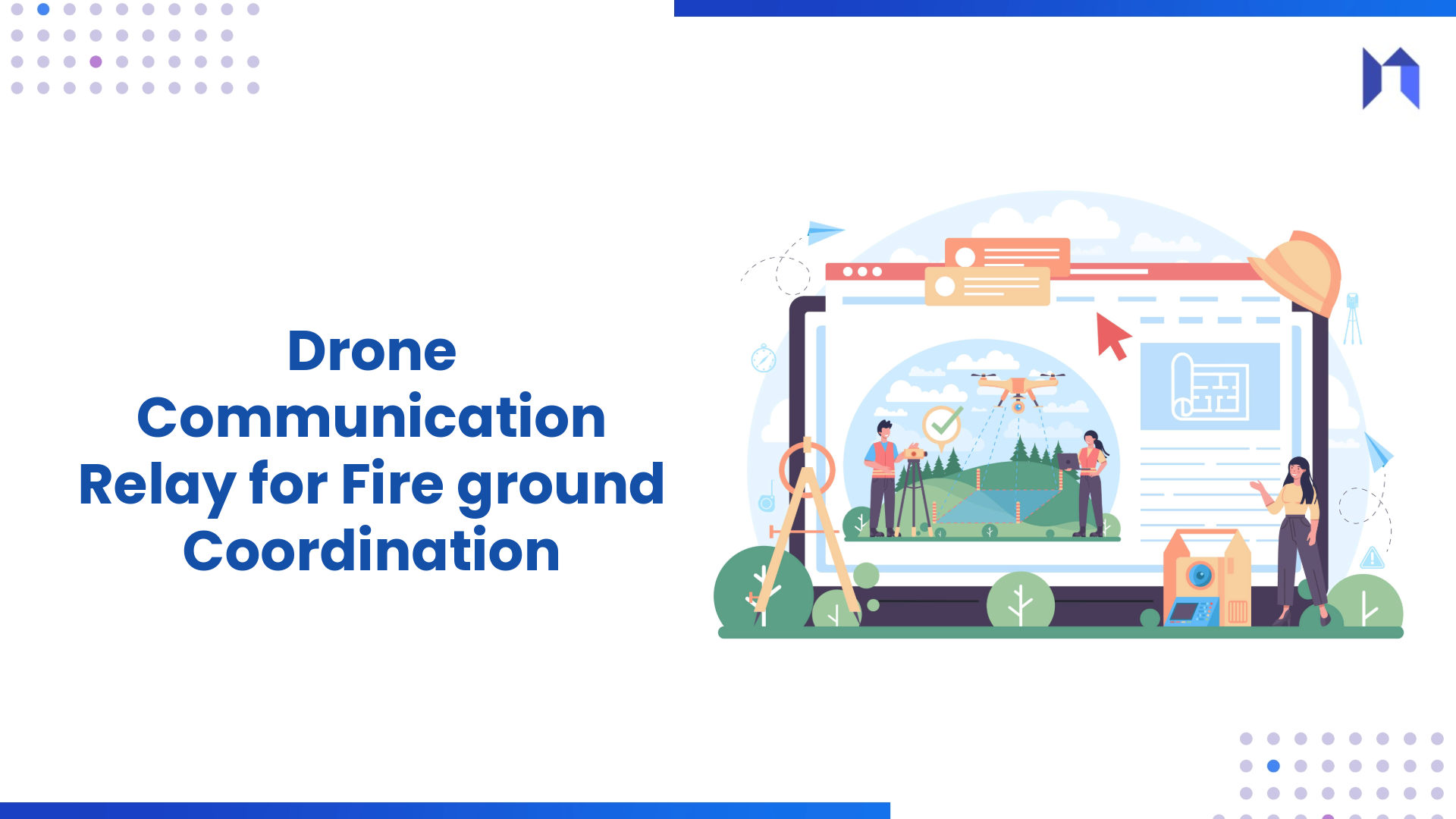Executive Summary
Wildfires and industrial fires pose an escalating global threat—causing billions in losses, endangering lives, and overwhelming emergency response systems. Traditional methods of fire scene monitoring rely heavily on manual reconnaissance, delayed situational updates, and fragmented data channels. This results in slower response times, inadequate resource allocation, and increased risk for ground teams.
Nexastack’s Agentic AI framework redefines fire scene management through autonomous, edge-intelligent drones that perceive, reason, and act in real time. The Edge Vision Drone Agent fuses thermal and optical imagery to create an integrated 360° situational map—streaming structured, actionable data directly to the Nexastack Command Console.
This Agentic AI-driven system empowers first responders, command centres, and safety operators to make informed, high-velocity decisions—transforming how agencies manage fire detection, spread analysis, and containment operations.
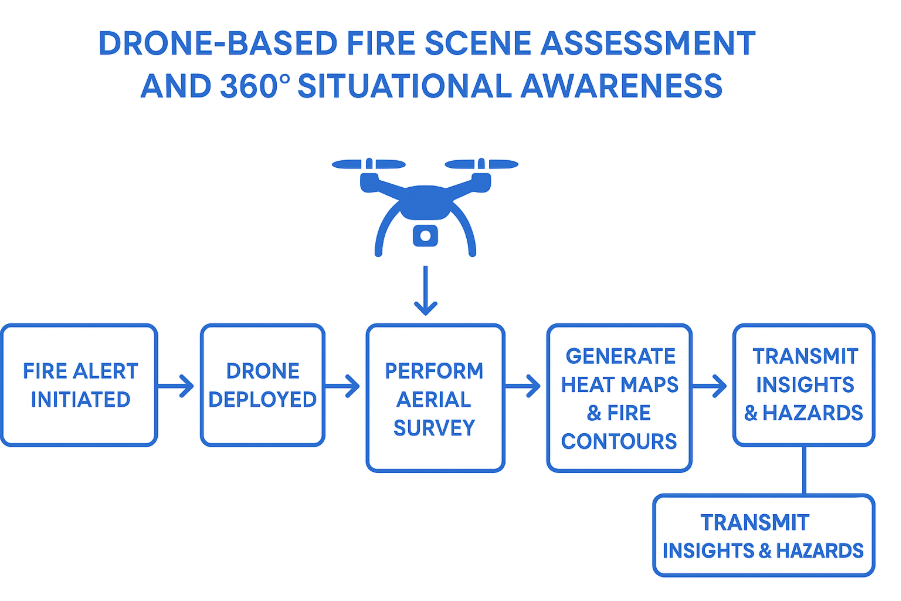
Challenge: Delayed Situational Awareness in Fire Response
In fire emergencies, every second is critical. Yet, most emergency response systems face three persistent challenges:
-
Limited Real-Time Visibility: Ground-based sensors and manual drone piloting provide only partial coverage. Thermal imaging or smoke visibility can often obscure the accurate detection of fire origin or spread.
-
Fragmented Data Streams: Thermal, optical, and environmental data often exist in silos—without a unified intelligence layer to synthesize, contextualize, and prioritize insights.
-
Operational Delays and Risk Exposure: Human reconnaissance delays data relay to command centers. Teams operate without updated situational awareness, increasing risk to firefighters and assets.
-
Lack of Predictive Insights: Traditional systems lack reasoning capabilities—unable to anticipate fire spread based on terrain, wind, and heat intensity patterns.
These inefficiencies hinder coordination across departments, reducing the overall efficacy of fire suppression and rescue operations.
Solution Overview: Nexastack Agentic AI for Fire Scene Intelligence
Nexastack’s Agentic Infrastructure Platform provides the execution backbone for reasoning and autonomy at the edge. By integrating Edge Vision Drone Agents, Private Cloud AI inference, and Sovereign AI governance, fire response teams can establish a continuously learning, adaptive intelligence loop.
Key Concept: Edge Vision Drone Agent
An Edge Vision Drone Agent is an autonomous AI agent operating directly at the data source—on the drone’s embedded computing system. It performs reasoning and analytics locally, using thermal and optical fusion, without depending on cloud latency.
This agentic architecture transforms each drone into an independent situational analyst, capable of:
-
Detecting fire ignition points and tracking spread trajectories
-
Quantifying heat intensity and fuel consumption patterns
-
Coordinating with other drones via Agent-to-Agent (A2A) orchestration
-
Streaming structured insights, not raw video, to command systems
The result is an intelligent swarm of drones, working collaboratively under Nexastack’s unified control plane.
Architecture Overview
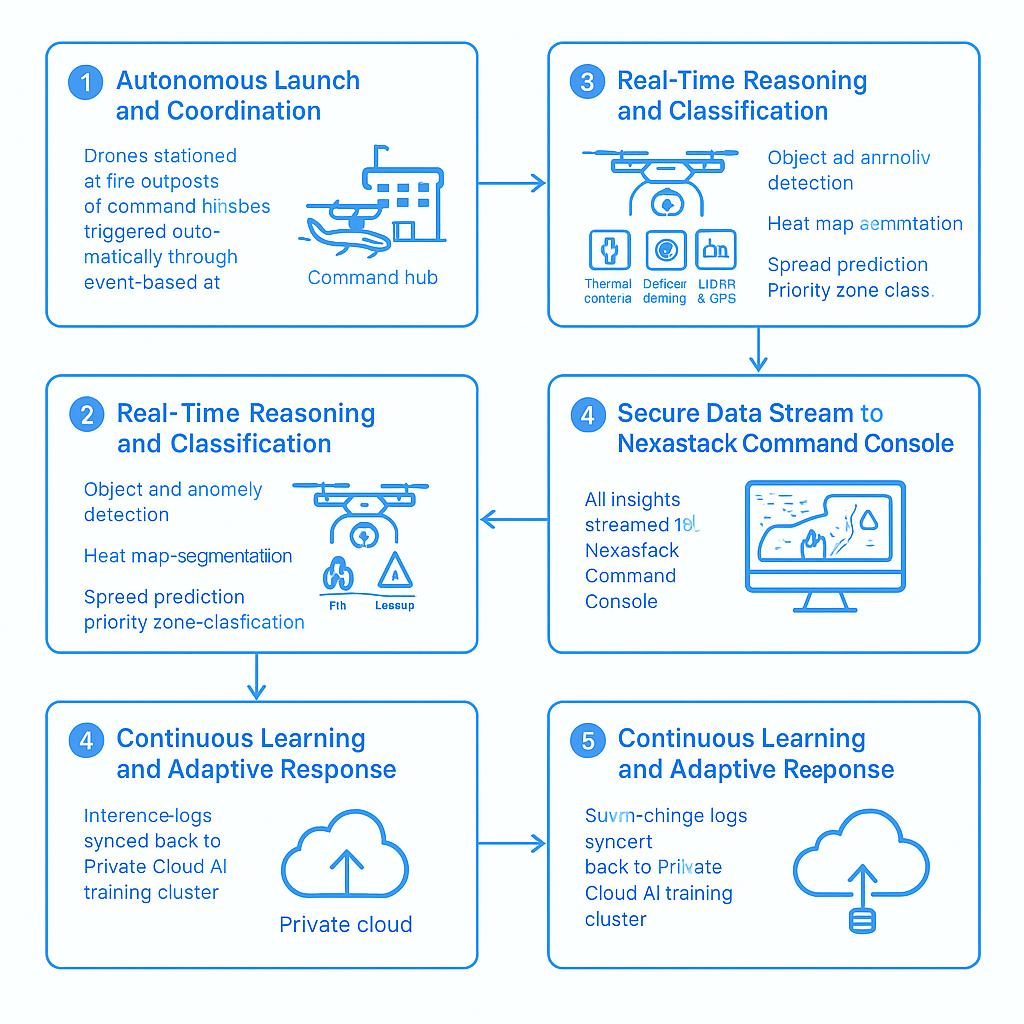
- Autonomous Launch and Coordination
Drones stationed at fire outposts or command hubs are triggered automatically through event-based activation (e.g., smoke sensor detection or emergency dispatch). Each drone operates as an independent Edge Vision Agent, preloaded with mission parameters and connected via a Sovereign AI network for secure communication.
- Sensor Fusion and Local Inference
Each drone integrates:
-
Thermal Cameras – capturing heat signatures and intensity gradients
-
Optical Cameras – visual mapping of terrain, smoke, and infrastructure
-
LiDAR and GPS – spatial awareness and topographic correlation
Using Private Cloud AI inference models, deployed locally via Nexastack’s Edge Inference Runtime, the drone fuses multiple sensor modalities into an enriched spatial model—executed securely and in compliance with governance frameworks.
- Real-Time Reasoning and Classification
The Edge Vision Agent performs:
-
Object and anomaly detection (firefronts, hotspots, obstructions)
-
Heat map segmentation and fire perimeter estimation
-
Spread prediction using wind and fuel data correlations
-
Priority zone classification (life risk, asset value, accessibility
- Secure Data Stream to Nexastack Command Console
All insights—heat maps, fire contours, hazard predictions—are streamed in structured JSON or geospatial formats to the Nexastack Command Console. The console aggregates data across multiple drones, creating a unified, real-time 360° situational awareness dashboard. Data sovereignty is enforced through Sovereign AI protocols, ensuring all visual and telemetry data remains within secure, region-specific boundaries.
- Continuous Learning and Adaptive Response
After each mission, inference logs and situational outcomes are synced back to Private Cloud AI training clusters for retraining. This enables continuous improvement across perception, reasoning, and collaboration capabilities of the drone fleet.
Core Capabilities
-
360° Situational Awareness: Integrates multi-agent drone vision into a panoramic digital twin of the fire zone, allowing commanders to monitor every quadrant in real-time with dynamic overlays for temperature, wind, and resource locations.
-
Edge Intelligence: Inference at the source ensures sub-second latency and resilience in connectivity-challenged environments. The Edge Vision Agent maintains autonomous reasoning even during temporary network outages.
-
Private Cloud AI Inference: Fire data and video feeds are processed securely within private or hybrid clouds, adhering to compliance frameworks. No sensitive footage or telemetry is exposed to public networks, maintaining operational confidentiality.
-
Agent-to-Agent Collaboration: Drones communicate contextually, sharing coverage zones, detected hotspots, and resource priorities. The Nexastack orchestration layer prevents redundant scanning and optimizes aerial coverage.
-
Predictive Fire Spread Modeling: The system applies physics-informed AI models to estimate potential spread patterns, enabling preemptive deployment of ground resources.
-
Sovereign AI Control and Auditability: All inference, coordination, and decision trails are logged for traceability—critical for regulatory reporting and post-incident evaluation.
Benefits and Impact
|
Dimension |
Traditional Response |
With Nexastack Agentic AI |
|
Detection Time |
Manual reporting, minutes delay |
Autonomous detection within seconds |
|
Coverage |
Line-of-sight limited |
Full 360° spatial coverage |
|
Data Flow |
Fragmented and unstructured |
Unified, structured, real-time |
|
Decision Making |
Reactive |
Proactive and predictive |
|
Operator Safety |
High exposure |
Remote situational awareness |
|
Governance |
Manual compliance |
Automated Sovereign AI controls |
Use Case Flow
-
Incident Trigger – Heat or smoke sensor detects anomaly → Nexastack event pipeline activates drone swarm.
-
Drone Deployment – Edge Vision Agents autonomously launch and establish A2A coordination grid.
-
Data Capture and Fusion – Real-time multi-sensor data processed locally.
-
Inference and Mapping – Firefronts classified; spread trajectory projected.
-
Command Console Sync – Structured situational intelligence streamed securely.
-
Response Orchestration – AI-driven task allocation to responders and ground units.
-
Post-Mission Analytics – Autonomous feedback loop updates AI models for future readiness.
Integration with Nexastack Ecosystem
The Drone-Based Fire Scene Assessment use case exemplifies how Nexastack’s Agentic Infrastructure Platform unifies reasoning, orchestration, and governance across edge environments.
Integrations include:
-
Agentic Command Console: Visual interface for monitoring multi-agent coordination.
-
Edge Runtime: Containerized inference environment for low-latency reasoning.
-
A2A Communication Bus: A decentralized mesh that enables inter-agent negotiation.
-
Private Cloud AI Gateway: Secure inference orchestration across hybrid deployments.
-
Sovereign AI Policy Engine: Ensures compliance, traceability, and operational trust.
By harmonizing these layers, Nexastack transforms emergency operations from manual to autonomous—bridging cloud intelligence with edge execution.
Industry Relevance
-
Public Safety and Fire Departments: Enhance urban firefighting efficiency, reduce responder risk, and accelerate rescue planning through autonomous assessment.
-
Industrial Safety and Energy: Deploy drones for early-stage detection in refineries, power grids, and manufacturing sites—mitigating asset loss and downtime.
-
Forestry and Environmental Monitoring: Monitor large terrains for wildfire prevention, environmental impact assessment, and climate resilience analytics.
-
Defense and Disaster Response: Integrate sovereign, secure AI inference for mission-critical reconnaissance and hazard response in sensitive zones.
Data Privacy, Security, and Governance
Fire incident data often includes geo-locations, infrastructure details, and environmental variables that must remain sovereign.
Nexastack enforces AI sovereignty through:
-
Data Residency Control: All data processed and stored within regional compliance zones.
-
Encryption and Access Policies: End-to-end encryption with fine-grained role-based controls.
-
Model Transparency: Each Edge Vision model version is auditable and explainable.
-
Compliance Frameworks: Aligns with ISO/IEC 27001, NIST AI RMF, and local emergency data regulations.
This ensures that mission-critical intelligence remains secure, compliant, and trusted.
Future Roadmap
Nexastack aims to evolve the Edge Vision Drone Agent capabilities toward full Agentic Swarm Intelligence, where multiple agents self-organize, learn cooperatively, and optimize in real-time.
Upcoming enhancements include:
-
Integration of multimodal generative models for dynamic simulation
-
Cross-domain Agent Federation with ground robots and IoT sensors
-
Federated learning for decentralized model updates
-
Human-in-the-loop feedback for mission-critical decision validation
Conclusion
Fire emergencies demand precision, speed, and trust. With Nexastack’s Agentic AI platform, organizations can move beyond reactive operations to intelligent autonomy—powered by Edge Vision Drone Agents and governed through Sovereign AI frameworks.
By unifying real-time perception, contextual reasoning, and secure orchestration, Nexastack delivers proper 360° situational awareness—a transformative leap in fire scene intelligence and public safety automation.
Nexastack’s Private Cloud AI and Agentic Infrastructure redefine how enterprises and governments deploy autonomous systems—from observation to orchestration—enabling a safer, smarter, and more resilient world.
Frequently Asked Questions (FAQs)
Autonomous drones powered by Agentic AI use thermal and optical fusion for 360° fire assessment with Private Cloud AI and Sovereign AI security.
How does Nexastack enhance fire scene assessment using Agentic AI?
Nexastack uses Edge Vision Drone Agents that reason autonomously, fusing thermal and optical imagery to deliver real-time situational intelligence for faster, safer fire response.
What role does Private Cloud AI play in this use case?
Private Cloud AI ensures all inference and processing occur within secure, controlled environments—maintaining low latency, high reliability, and full data confidentiality.
How does Sovereign AI ensure data security during operations?
Sovereign AI enforces governance policies for data residency, access control, and compliance, ensuring all visual and telemetry data remain within jurisdictional boundaries.
Can multiple drones collaborate in real time?
Yes. Nexastack enables Agent-to-Agent (A2A) orchestration, allowing multiple drones to share insights, optimize coverage, and coordinate actions seamlessly during missions.
Which industries can adopt this Agentic AI solution?
This solution benefits public safety, industrial fire response, energy, defense, and forestry, where real-time fire detection and situational awareness are mission-critical.
